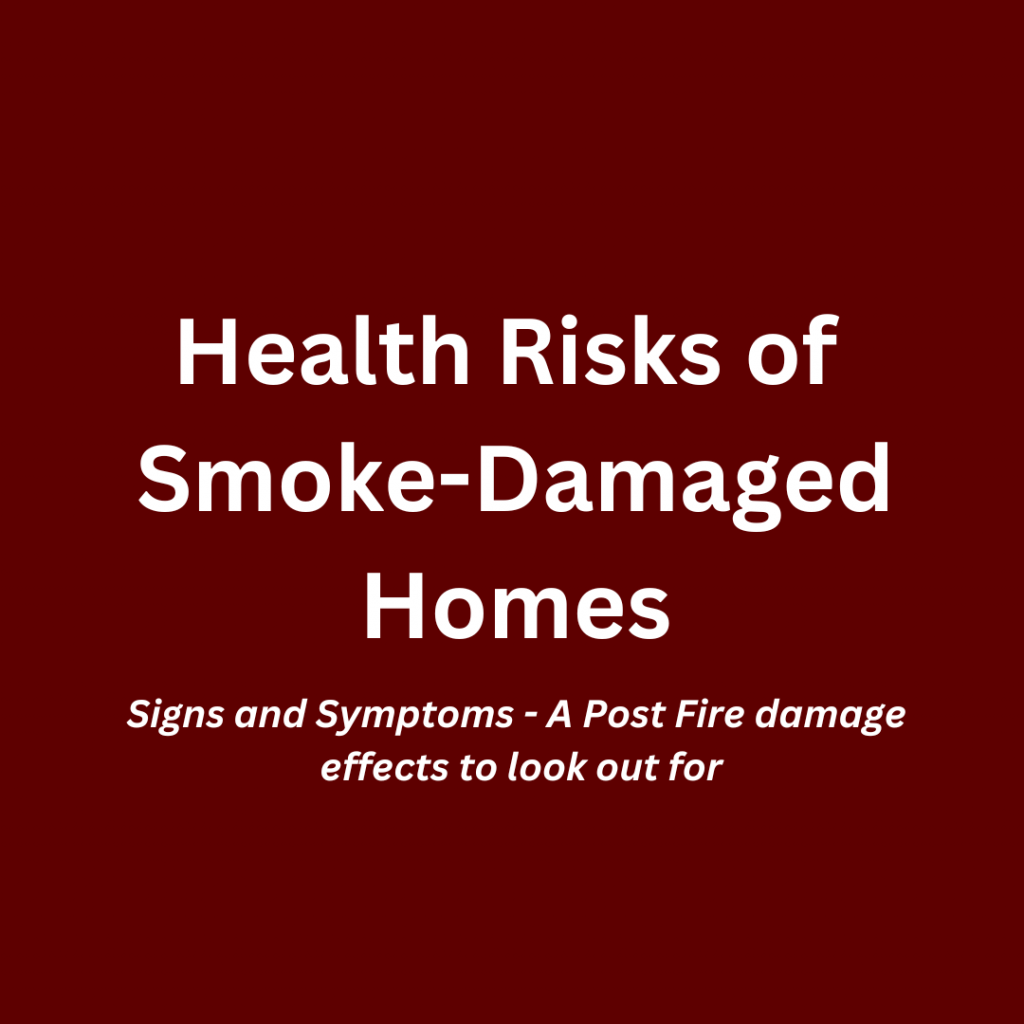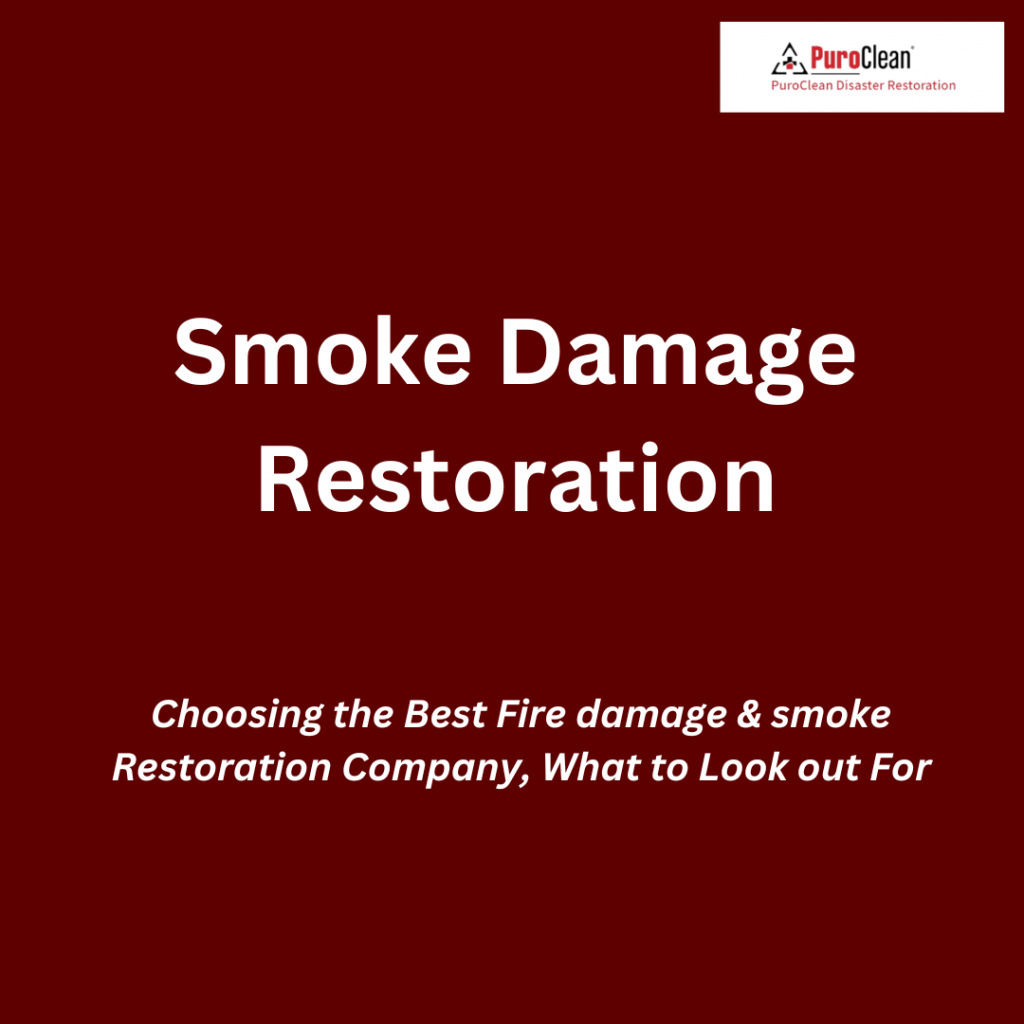Summary
Is it safe to stay in a house after smoke damage?
No, it is not safe to remain in a home affected by smoke damage. Even when a fire has been extinguished and the home appears intact, lingering smoke and soot can pose serious health risks. These particles can contaminate the air, settle in fabrics, damage the structure, and cause respiratory, neurological, and skin issues. Professional cleaning and inspection are critical before re-occupying the space. Even small fires that are put out quickly can create long-lasting dangers if not properly addressed.

A Night That Changed Everything: The Story of the Johnson Family
On a quiet November evening in Indianapolis, the Johnson family was winding down after dinner. Their children were playing upstairs, while Sarah and her husband, Michael, loaded the dishwasher. Then suddenly, a sharp burning smell emerged from the kitchen. The toaster had malfunctioned, sparking a fire on the counter.
Thanks to their fire extinguisher, the fire was put out within minutes. Although the flames never spread beyond the kitchen, thick smoke had already filled the space, staining walls, ceilings, and appliances. The family, feeling grateful that the fire had not spread, opened the windows and decided to stay the night in the home.
By morning, the situation had taken a dramatic turn. Sarah awoke with a sore throat and dry eyes. Their youngest son, who had mild asthma, was having trouble breathing. A persistent smoky odor filled the air, and everything from curtains to furniture felt coated in a fine, black film. It became clear that while the fire was gone, the home was still unsafe.
This story is not uncommon. Many families underestimate the dangers of smoke damage and remain in homes filled with invisible toxins. But smoke residue is far more harmful than it appears.
What Exactly Is Smoke Damage?
Smoke damage occurs when the smoke from a fire leaves behind particles and residue that settle onto surfaces, fabrics, furniture, and even inside walls and ventilation systems. It is not only a visual issue such as blackened walls or a smoky smell but a chemical and biological hazard as well.
Smoke is made up of:
- Carbon monoxide and carbon dioxide
- Volatile organic compounds (VOCs)
- Soot and ash
- Metals and acids
- Toxic residues from plastics, paint, fabric, and insulation
These particles are microscopic and can penetrate deep into porous materials and air ducts, remaining long after the visible signs have been cleaned up.
The Hidden Health Risks of Smoke-Damaged Homes

Staying in a smoke-damaged house, even if there was no major fire damage, can pose significant health risks. Smoke affects people differently depending on their age, existing medical conditions, and duration of exposure.
Respiratory Complications
Smoke particles are small enough to bypass your body’s natural filtration system and enter the lungs. Prolonged exposure can cause:
- Coughing and wheezing
- Shortness of breath
- Aggravated asthma and chronic bronchitis
- Increased vulnerability to respiratory infections
Irritation of the Eyes, Nose, and Skin
Smoke residue can trigger inflammation in sensitive tissues. This includes:
- Burning or watery eyes
- Sore throat
- Nasal congestion
- Rashes or skin dryness
Neurological Symptoms
Toxins in smoke, such as carbon monoxide, can also affect the nervous system. Symptoms may include:
- Headaches
- Fatigue
- Dizziness
- Difficulty concentrating or memory loss
Compounded Risk for Vulnerable Individuals
While smoke damage is dangerous to anyone, it is particularly hazardous for:
- Infants and young children
- Pregnant women
- Elderly individuals
- People with existing heart or lung conditions
Even brief exposure can lead to complications in these groups.
Why You Shouldn’t Stay in a Smoke-Damaged House
Some people may assume that because there were no flames or structural damage, it’s okay to stay in the house and clean up later. However, this approach can be extremely dangerous. Here’s why:
- Lingering Toxins: Smoke continues to release chemical fumes for days or even weeks.
- Air Circulation: Smoke particles get into your air ducts and circulate with your HVAC system.
- Surface Contamination: Fabrics, carpets, and walls can harbor toxins.
- Invisible Damage: Smoke can weaken materials like drywall and electrical wiring.
Even one night in a smoke-damaged environment can cause negative effects, especially for children and those with pre-existing health conditions.
Can You Just Clean It Yourself?
After a fire, some homeowners attempt a DIY cleanup using basic tools and household cleaners. Unfortunately, smoke damage requires specialized treatment beyond what standard cleaning can provide.
Here’s why DIY cleaning is not effective:
- Particles are microscopic and embed themselves in porous materials like drywall and fabric.
- Standard cleaning products do not neutralize acidic soot, which continues to corrode surfaces.
- HVAC systems must be professionally cleaned to avoid recirculating toxic particles.
- Odors and residues linger even if surfaces appear clean.
Attempting to clean smoke damage yourself may worsen the problem or delay proper treatment, allowing health hazards to persist.
What Professional Smoke Damage Restoration Looks Like

Fire and smoke damage restoration companies follow strict guidelines and use industrial equipment to fully remove contaminants. Certified professionals are trained in:
Air Purification
Using HEPA-filtered air scrubbers and negative air machines, professionals remove fine particles and odors from the air.
Thermal Fogging
This method uses a heated chemical fog that penetrates into crevices and fibers to neutralize odors and toxins.
Ozone Treatment
Ozone generators break down smoke molecules and deodorize materials such as furniture, drapes, and carpets.
Surface Cleaning
Walls, ceilings, floors, and household items are treated with specialized cleaning agents designed to dissolve and lift soot.
HVAC Cleaning
Ductwork is carefully cleaned and sanitized to prevent recontamination of the air.
Sealing and Painting
Smoke-damaged walls often require sealing with odor-blocking primers before repainting.
Professional restoration not only ensures a thorough cleanup but also verifies that the home meets safety standards before it is reoccupied.
For immediate assistance with smoke odor removal and fire damage restoration in Indiana, contact PuroClean Disaster Restoration, Call (+1) 317-467-4436.
PuroClean Disaster Restoration has over 19 years of experience in the fire damage restoration industry, with over 100 five star reviews on Google serving Indianapolis. Click on this link to see it’s online reviews and ratings.
Signs You Should Not Ignore
Even if the fire was minor, there are indicators that your home may still be unsafe:
- Strong or persistent smoky odor
- Black streaks or residue on walls and ceilings
- Soot deposits around air vents or light fixtures
- Discoloration or corrosion on metal surfaces
- Headaches or coughing after being inside for a short period
- HVAC filters that quickly become blackened
If any of these symptoms are present, the home needs immediate inspection and remediation.
Understanding Insurance and Temporary Housing
Most homeowners’ insurance policies include coverage for smoke and fire damage, including:
- Emergency cleaning and restoration
- Temporary housing while the home is treated
- Replacement of damaged personal items
It is important to document all damage and notify your insurance provider as soon as possible. In many cases, families can receive temporary lodging coverage while their home undergoes restoration.
Common Misconceptions About Smoke Damage
“The fire was small; the smoke can’t be that bad.”
Even a small kitchen fire can produce enough smoke to contaminate an entire home. The danger is in the chemicals, not the size of the flames.
“If I can’t see the smoke, it must be gone.”
Smoke damage can be invisible, especially in walls, insulation, and air ducts. Odorless toxins may still linger.
“A little smell is no big deal.”
Smoke odors are caused by chemical off-gassing. If you can still smell it, the toxins are still active.
What to Do Immediately After a Fire
If you experience a fire in your home, here’s a step-by-step guide:
- Evacuate the property and call emergency services.
- Do not re-enter the home until cleared by firefighters.
- Contact your insurance company.
- Avoid turning on the HVAC system.
- Call a certified fire and smoke damage restoration company.
- Document damage with photos or video for your claim.
- Avoid cleaning anything until professionals arrive.
How Long Before It’s Safe to Return?
The timeline for safe reoccupation varies based on the severity of the smoke damage and the materials affected. On average:
- Minor smoke damage: 2 to 4 days
- Moderate smoke damage: 1 to 2 weeks
- Severe or widespread smoke damage: Several weeks
Your restoration company can perform an indoor air quality test to confirm when it’s safe to return.
What If You Can’t Afford to Leave?
If temporary relocation is financially challenging, consider these options:
- Ask your insurance about “loss of use” or temporary housing coverage.
- Seek assistance from local organizations like the Red Cross or churches.
- Use air purifiers with HEPA filters as a temporary measure.
- Work with restoration companies that offer flexible payment plans.
While affordability is a concern, your health must come first.
Key Takeaways and Lessons
Fire does not have to destroy your home physically to cause long-term harm. Smoke, often underestimated, can linger and damage your health, your property, and your peace of mind. It’s not just about cleaning it’s about safety.
Families like the Johnsons learned the hard way that staying in a smoke-damaged home is not worth the risk. With professional help, they were able to restore their home and reclaim their health.
When in doubt, step out. Safety should never be an afterthought.
Frequently Asked Questions
Can I sleep in a home after a fire has been extinguished?
No. Even if there are no visible flames or damage, the smoke residue and chemicals in the air can pose serious health risks. Always wait until professionals clear the home.
Is it okay to stay in one room while the rest is cleaned?
Not recommended. Smoke particles travel through the air and HVAC system, affecting all rooms. Containment is difficult, and you may still be exposed.
Can air purifiers make a smoke-damaged house safe?
Air purifiers help reduce particles, but they are not a complete solution. They should be used alongside professional cleanup, not as a replacement.
How do I know if the air in my home is safe?
Only an indoor air quality test, performed by a certified technician, can confirm whether your home’s air is safe to breathe.
What’s the first thing I should do after a fire?
Evacuate safely, call emergency responders, and do not re-enter until you have professional clearance. Then contact your insurance provider and a certified restoration company.
